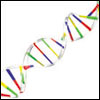 |
LCGC TV: Luigi Mondello on Food Analysis using 2D GC
Comprehensive gas chromatography (GC) is a multidimensional technique that has the potential to increase peak capacity resolution when separating complex mixtures. In this new video from LCGC TV, Luigi Mondello from the University of Messinia, Italy, describes the fundamental principles of 2D GC, and explains the advantages over 1D GC. |
|
|

|
The LCGC Blog: GC Column Conditioning – Stop Wasting Time and Money!
LCGC blogger Tony Taylor sees a lot of bad practice when columns are conditioned. Here he produces a definitive guide with enough background information to explain why and how capillary GC columns should be conditioned. |
| |

Photo Credit: Henryk Sadura/Getty Images
|
The Column: Pittcon Hits the Big Easy
A preview of what's in store for chromatographers at Pittcon 2015, which will be held from 8–12 March 2015 at the Ernest N. Morial Convention Center in New Orleans, Louisiana, USA. |
|

|
GC Connections: GC Detectors: From Thermal Conductivity to Vacuum Ultraviolet Absorption
Some might consider gas chromatography (GC) a mature technique. However, several substantial advances in GC technology in the past few years have proven that there is still room for innovation. Here, we present a brief history of GC detectors, leading to the most recent introduction of a vacuum ultraviolet (VUV) absorption detector, which has been shown to provide significant benefits in areas where mass spectrometry (MS) detection has problems. |
|

Photo Credit: Dirk Freder/Getty Images |
News: Investigating the Origin of Life
Ten aldehydes have been discovered in simulated interstellar ice, a potential precursor to comets and other extraterrestrial bodies. The scientists performed multidimensional gas chromatography coupled with time-of-flight mass spectrometry (GC×GC–TOF-MS) to detect the aldehydes, two of which are intermediates in the synthesis of ribonucleotides that could have been responsible for the origins of life on Earth. |
|